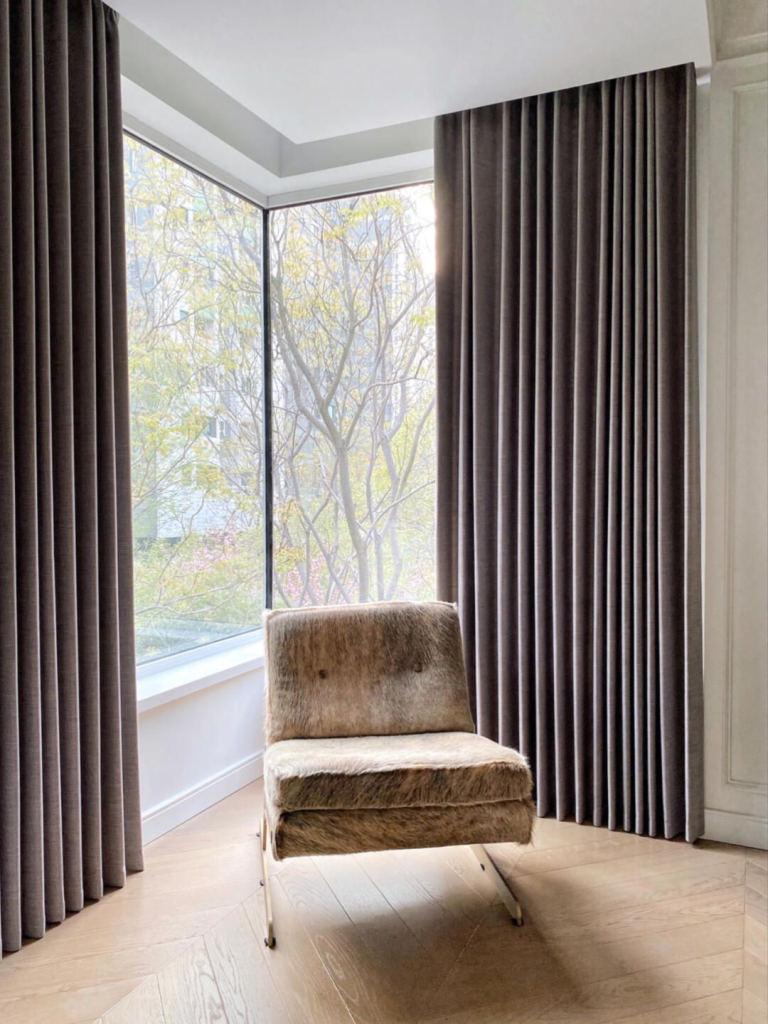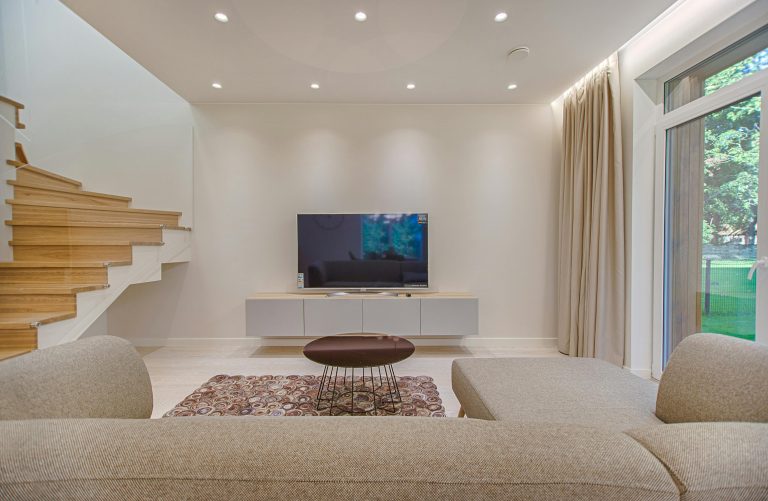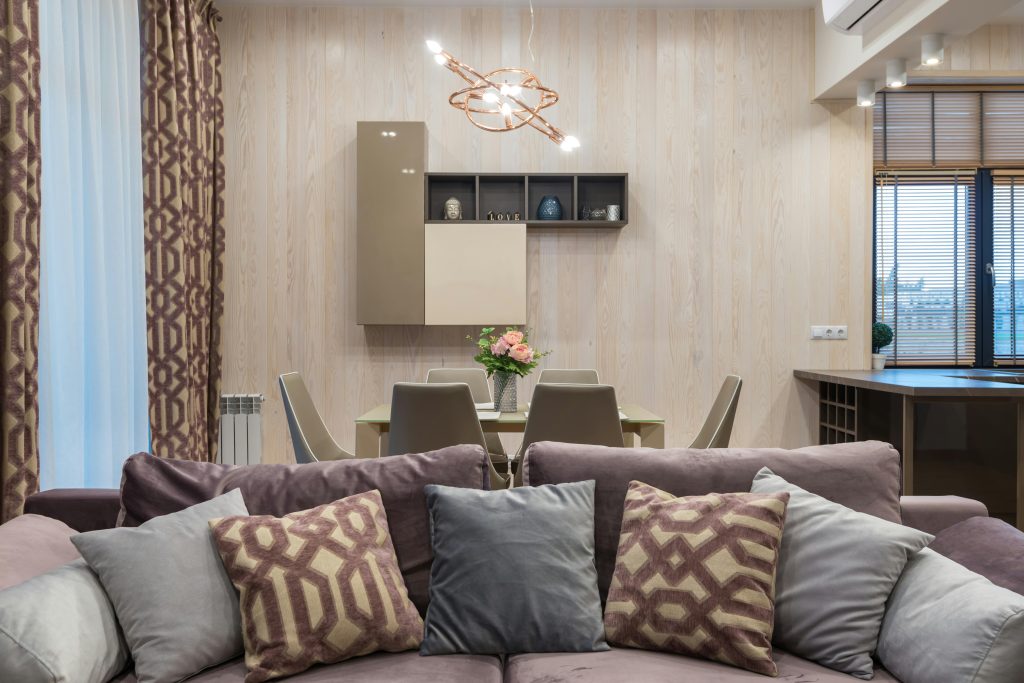
Table of Contents
ToggleCurtains vs. Blinds: What’s the Difference?
Before diving into the pros and cons, let’s quickly define each option:
- Curtains are fabric panels that hang from a rod or track and come in a wide variety of styles, colors, patterns, and thicknesses. They range from sheer fabrics that filter light to thick, heavy drapes that block it out.
- Blinds are structured window coverings made from various materials, including wood, faux wood, aluminum, or fabric. Blinds have adjustable slats or folds, allowing you to control the amount of light and privacy.
Style and Aesthetic Appeal
Curtains
- Pros: Curtains offer a softer, more elegant look and are available in countless styles, colors, and patterns, making them easy to match with any decor. They also create a sense of warmth and can make a room feel cozier.
- Cons: Depending on the fabric and style, curtains can take up more space than blinds, which may not suit minimalist or small spaces.
Blinds
- Pros: Blinds provide a modern, streamlined look, especially in minimalistic or contemporary spaces. With a variety of materials such as wood, faux wood, and aluminum, blinds can be customized to fit different styles.
- Cons: Blinds tend to have a more structured appearance, which may feel too rigid for rooms that require a softer, more inviting look, like bedrooms or living rooms.
Winner: Curtains for versatility and warmth; Blinds for a clean, modern aesthetic.
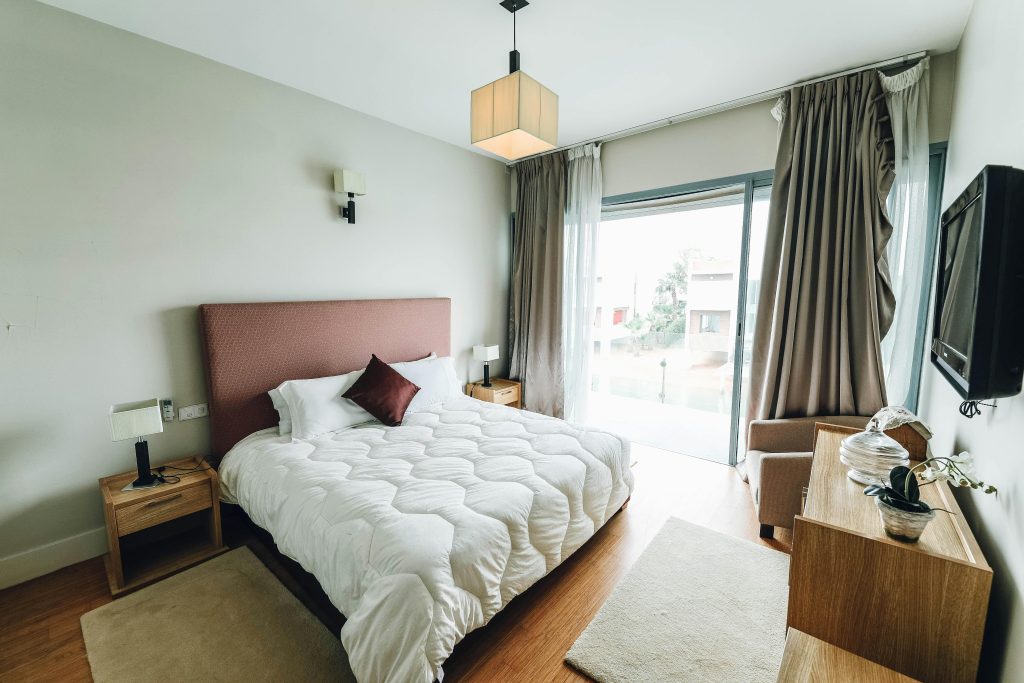
Light Control and Privacy
Curtains
- Pros: Curtains provide flexibility in terms of light control. Sheer curtains allow natural light in while providing some privacy, whereas blackout curtains are great for complete darkness.
- Cons: Curtains are generally less effective than blinds when it comes to precise light control. You’ll need to layer curtains (such as sheers with blackout curtains) for optimal control, which can be cumbersome.
Blinds
- Pros: Blinds offer precise control over light and privacy due to adjustable slats, allowing you to tilt them for partial or full coverage. They’re ideal for spaces like home offices or kitchens where light control is key.
- Cons: Blinds with slats (e.g., Venetian or vertical blinds) may let some light in, even when fully closed, which may not be ideal for those needing full blackout.
Winner: Blinds for precise light control; Curtains for flexible privacy and layering options.
Cost and Budget
Curtains
- Pros: Curtains come in a wide range of price points. From affordable off-the-shelf options to high-end custom-made drapes, there’s a curtain for almost any budget.
- Cons: High-quality or custom-made curtains, especially those made of premium fabrics, can be expensive. Additionally, if you want to layer curtains for more functionality, this can increase costs.
Blinds
- Pros: Basic blinds are typically more affordable than custom curtains, especially options like roller or aluminum blinds. Faux wood blinds offer a high-end look for less, and there are budget-friendly options to suit most rooms.
- Cons: Custom-made blinds or motorized options tend to be pricier, and materials like real wood or premium fabric blinds can increase costs.
Winner: Blinds for budget-friendly options; Curtains for flexibility across price points.
Maintenance and Cleaning
Curtains
- Pros: Depending on the fabric, some curtains are machine washable and easy to maintain. Heavier fabrics may require professional cleaning, but curtains can typically go longer between cleanings.
- Cons: Curtains in high-traffic areas, like the kitchen, may absorb odors, dust, and moisture, requiring frequent washing or professional cleaning, which can be inconvenient.
Blinds
- Pros: Blinds are generally easier to clean; you can simply wipe them down with a cloth or use a duster. Materials like faux wood or aluminum are ideal for humid areas like bathrooms or kitchens.
- Cons: Blinds with many slats (like Venetian or vertical blinds) can accumulate dust quickly, and it may be tedious to clean between each slat.
Winner: Blinds for easy cleaning; Curtains for low-maintenance options in non-humid rooms.
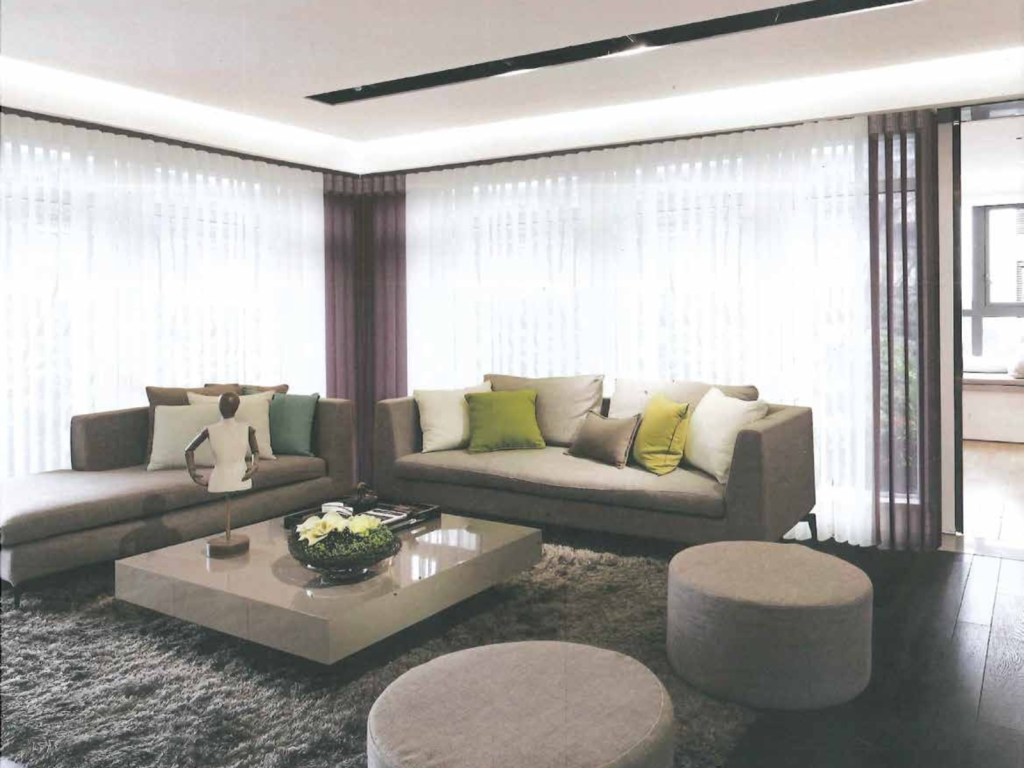
Durability and Longevity
Curtains
- Pros: With proper care, high-quality curtains can last for years without needing replacement. Fabric durability varies, but thicker, high-quality fabrics tend to withstand wear well.
- Cons: Curtains made of delicate fabrics, like silk, may fade over time if exposed to sunlight. Frequent washing can also reduce their lifespan.
Blinds
- Pros: Blinds made of durable materials like faux wood or aluminum tend to last longer and resist warping or fading. They’re ideal for areas exposed to moisture or direct sunlight.
- Cons: Fabric blinds may be less durable than their wood or aluminum counterparts, as fabric can fade or wear down over time with frequent cleaning.
Winner: Blinds for high durability in humid areas; Curtains for longevity with quality fabrics.
Room Suitability
Living Rooms: Curtains are often preferred in living rooms due to their soft, inviting look, though blinds can work well in minimalist or modern living spaces.
Bedrooms: Curtains are ideal, especially blackout curtains that block light for restful sleep. Blinds can also work, but layering them with sheers or blackout curtains is recommended for privacy and light control.
Kitchens: Blinds are usually better for kitchens, as they’re easier to clean and more resistant to moisture.
Bathrooms: Blinds are typically better in bathrooms, especially moisture-resistant options like faux wood or aluminum blinds.
Final Verdict: Which Is Better?
Both curtains and blinds offer unique benefits, and the choice ultimately depends on your style, budget, and the specific needs of each room. Here’s a quick recap:
- Choose Curtains If: You want a cozy, soft look with more versatility in color and pattern, or if you need better sound and light insulation.
- Choose Blinds If: You prefer a modern, minimalist look, need precise light control, or need durable window treatments for humid areas like kitchens and bathrooms.
In many cases, the best option is to layer curtains and blinds for the ultimate flexibility and style. This approach lets you enjoy the softness of curtains with the practicality of blinds, creating a look that’s both functional and beautiful.
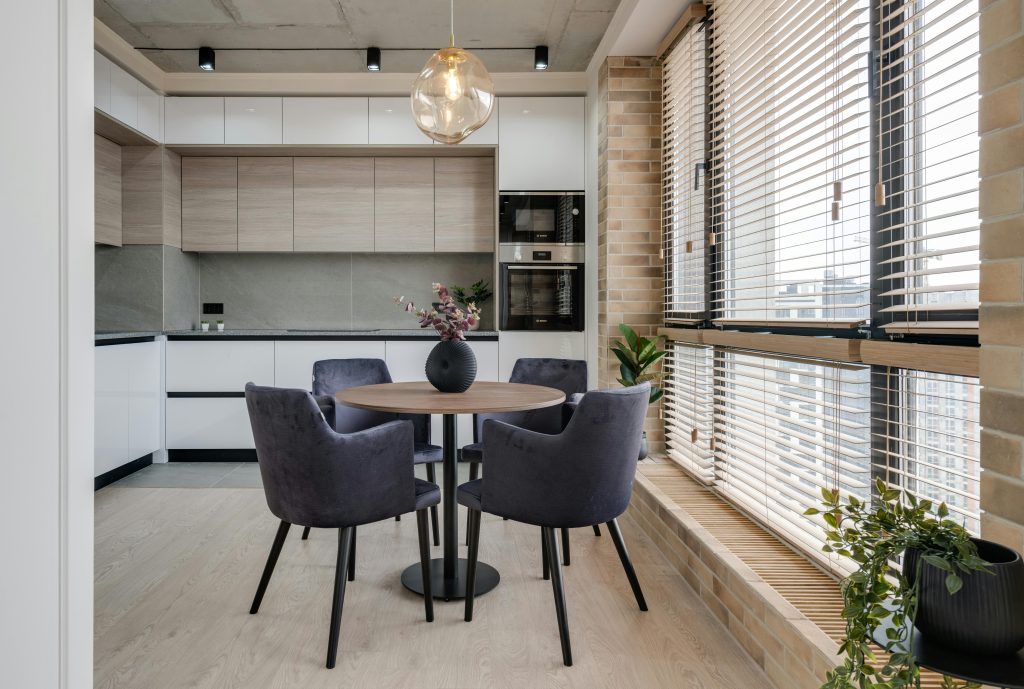
Conclusion
Whether you choose curtains, blinds, or a combination of both, the right window treatment can enhance your home’s aesthetic while offering privacy and comfort. Consider your room type, budget, and maintenance needs to find the perfect solution tailored to your space. With the right choice, your window treatments can add that finishing touch to make each room feel complete.

